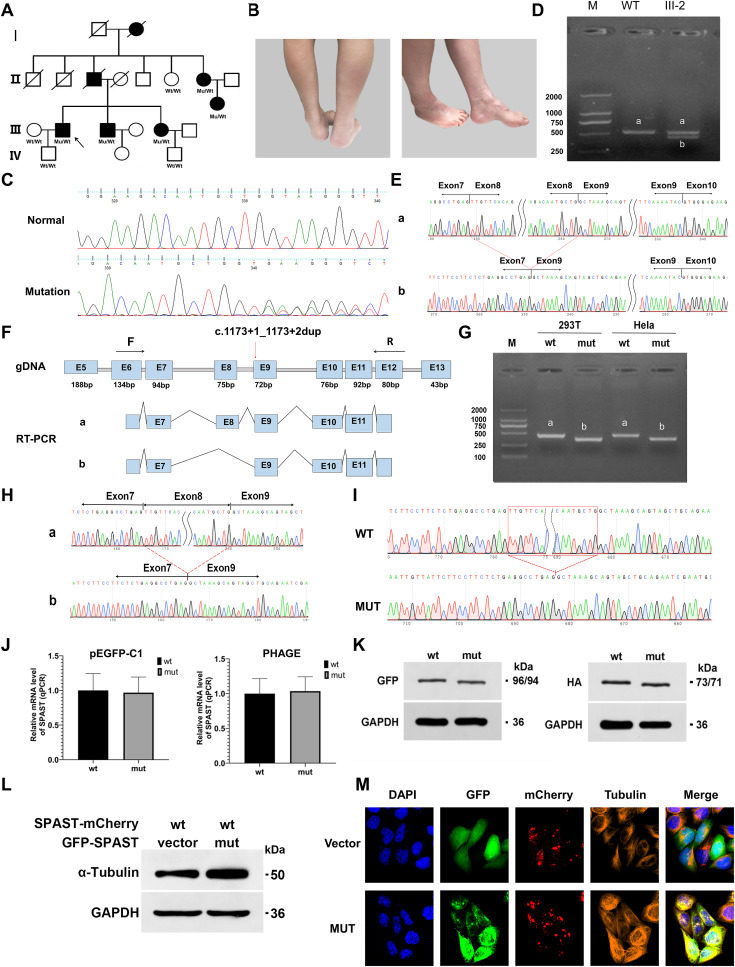
Dominant negative effect as a novel mechanism of SPAST gene mutation in a large family with hereditary spastic paraplegia


Hereditary spastic paraplegia (HSP) is a group of disorders with genetic heterogeneity, lower-extremity weakness, and spasticity are the most common signs and symptoms. SPAST is the most frequently disease-causing gene. Spastin is a microtubule-severing enzyme encoded by SPAST that cleaves long microtubules into short fragments by interacting with other proteins or membranes. Hereditary spastic paraplegia type 4 (SPG4), which is autosomal dominant, is the clinical subtype associated with SPAST mutations. SPG4 accounts for up to one-third of all HSP cases and usually presents with isolated lower extremity spasticity, with or without bladder or sensory dysfunction.1 The main cause of SPG4 is believed to be spastin haploinsufficiency, which results from mutations in the SPAST gene.2 These mutations cause reduced spastin severing ability and insufficient microtubule cutting.2 However, haploinsufficiency alone cannot explain some phenomena in SPG4 models.3 Gain-of-function mutations contribute to the onsets of HSP, and truncated spastin may cause damage to the central nervous system tracts through an isoform-specific toxic effect.4
